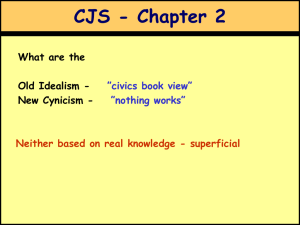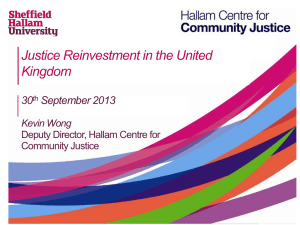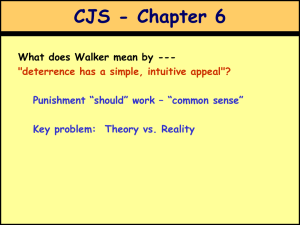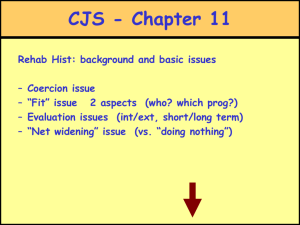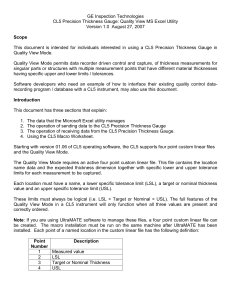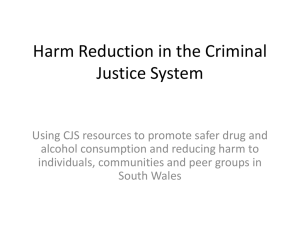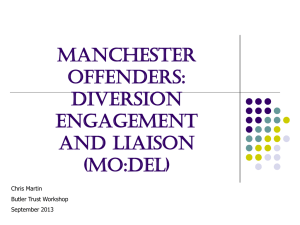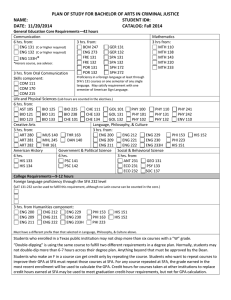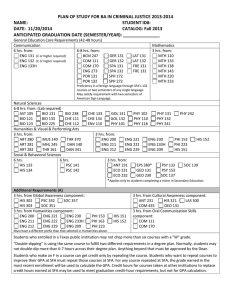Planning Checklist – Phase One: Explore
advertisement
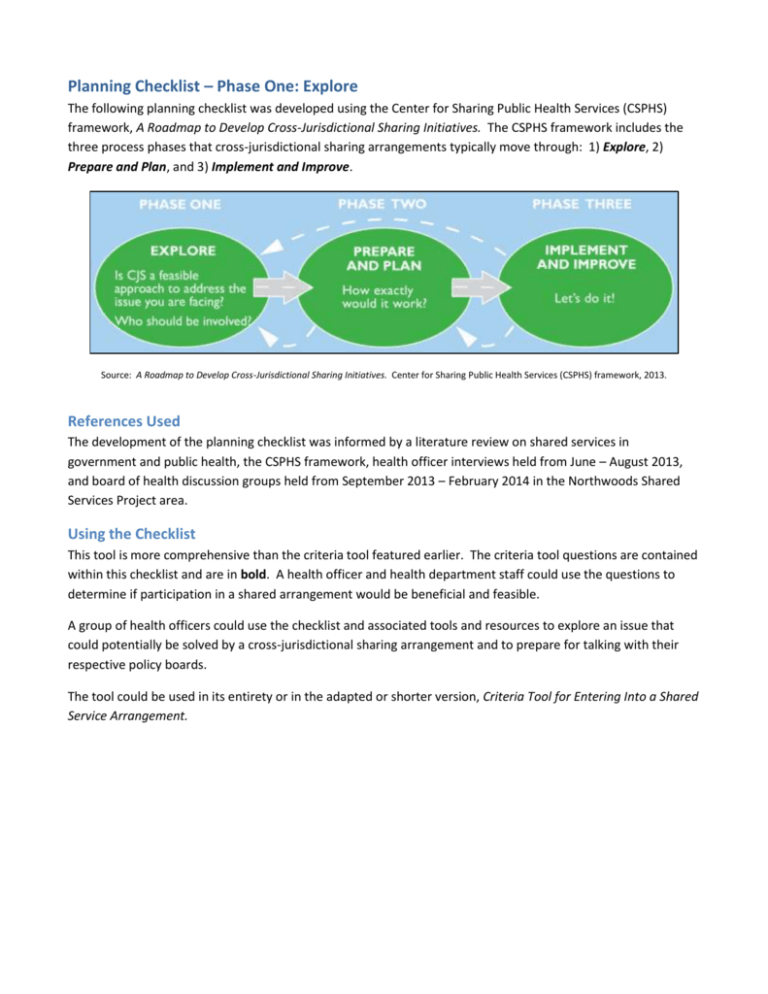
Planning Checklist – Phase One: Explore The following planning checklist was developed using the Center for Sharing Public Health Services (CSPHS) framework, A Roadmap to Develop Cross-Jurisdictional Sharing Initiatives. The CSPHS framework includes the three process phases that cross-jurisdictional sharing arrangements typically move through: 1) Explore, 2) Prepare and Plan, and 3) Implement and Improve. Source: A Roadmap to Develop Cross-Jurisdictional Sharing Initiatives. Center for Sharing Public Health Services (CSPHS) framework, 2013. References Used The development of the planning checklist was informed by a literature review on shared services in government and public health, the CSPHS framework, health officer interviews held from June – August 2013, and board of health discussion groups held from September 2013 – February 2014 in the Northwoods Shared Services Project area. Using the Checklist This tool is more comprehensive than the criteria tool featured earlier. The criteria tool questions are contained within this checklist and are in bold. A health officer and health department staff could use the questions to determine if participation in a shared arrangement would be beneficial and feasible. A group of health officers could use the checklist and associated tools and resources to explore an issue that could potentially be solved by a cross-jurisdictional sharing arrangement and to prepare for talking with their respective policy boards. The tool could be used in its entirety or in the adapted or shorter version, Criteria Tool for Entering Into a Shared Service Arrangement. Planning Checklist - Phase One: Explore Products: Description of Proposed Shared Arrangement, Criteria Tool, Fiscal Analysis Description of Shared Arrangement Describe the issue that needs to be addressed: Describe the goals of the CJS initiative being considered: Describe what services and capacities would be shared: Describe who would be involved in the arrangement: Describe how the services would be funded: Goals and expectations: Why would you consider CJS? Describe what in-kind resources would be contributed: Criteria Decision Will a CJS help solve the issue being addressed? YES NO Comments: Is the issue more easily addressed through a CJS than through internal management activities or reallocation of existing resources? YES NO Comments: Is a positive outcome expected for our community? YES NO Comments: Is the initiative in alignment with our mission and core values? YES NO Comments: Does the initiative leverage additional resources to advance one or more community, public health agency, jurisdiction or policy board priority areas? YES NO Comments: Goals and expectations: Why would you consider CJS?, continued Scope of the agreement: Partners and stakeholders Is the proposed program or service evidence based, YES NO and when applicable, designed to improve Comments: population health? Will the shared service help us accomplish at least one of the following: ■ ■ ■ ■ YES NO Comments: Achieve an essential public health service, Enhance the quality of the existing service, Provide a mandated service, Improve capacity for achieving public health accreditation? Is the service the same or higher quality as we currently offer in our jurisdiction? YES NO N/A IF NEW Comments: Does the agreement enhance our health department’s staffing or give us access to staff expertise? YES NO Comments: Are the goals and expected outcomes for the first year and subsequent years of the proposed CJS clearly stated? YES NO Comments: Does the proposed agreement assure adequate service levels for the investment of resources for our agency? YES NO Comments: Is the proposed agreement clear about which YES NO services will be shared and NOT shared, including: Comments: a) Functions (e.g. billing, human resources, IT) b) Programs and Capacity (e.g. WIC, environmental health, epidemiology, lab)? Is the proposed agreement clear about associated services that will NOT be shared? YES NO Comments: Do the parties in the agreement have experience working together in other CJS agreements, trust each other and have an understanding of the culture and history of each jurisdiction? YES NO Previous lessons learned: Are the motivations of each key partner clearly understood by the other partners? YES NO Comments: Is there is a political willingness among stakeholders YES NO and those affected by the issue to explore CJS as Comments: a possible solution? Partners and stakeholders, continued Have the partners agreed upon guiding principles for YES NO the CJS? Comments: Are the partners likely to get their policy board’s (e.g. Board of Health, Health Committee, HHS Committee, Tribal Health Board, Tribal Council, County Board) support if needed? YES NO Comments: Is there adequate support for the CJS from constituents, clients, and other stakeholders who may be affected by it? YES NO UNSURE Comments: Are the proposed outcomes, service model and YES NO UNSURE delivery, and staffing model feasible and supported Comments: by the partners, stakeholders and others affected by the CJS initiative? Are the partners in agreement on their respective roles and responsibilities and are they willing to enter into a written agreement? YES NO Comments: Is there consistency in the arrangement with other partnerships that the agency/jurisdiction has entered into? YES NO Comments: Do the partners share common resources such as YES NO health care networks, community services networks, Comments: and media markets? Fiscal Implications Is there a clear fiscal or service benefit such as: ■ New services for less money than could be achieved by doing it alone ■ Enhanced quality of service for an affordable investment ■ Savings through avoiding capital costs over the medium and long term (3-10 years) ■ Reduced annual rates of increase in expenditures Decreased annual operating cost ■ No increase in annual operating costs ■ Lower than expected rate of increase in annual operating costs? Are there funding incentives for a CJS model? YES NO Comments: YES NO Comments: Fiscal Implications, continued Leadership Personne l Is funding adequate to support staff and resources needed to meet program/service outcomes? Do funds pay for the increased indirect costs to the lead agency? YES NO Comments: Is there start-up funding for the initial planning phase? YES NO Comments: Is funding 2 – 5 years versus one-time, one year funding that is unlikely to be sustainable? Is there a plan for sustainable funding? YES NO Comments: Has the fiscal implication of not entering into a CJS been considered? Would we NOT be eligible for future funding opportunities with the CJS? YES NO Comments: Are there opportunities for securing additional grants by working in a CJS model? YES NO Comments: Is there a key partner in the CJS who can act as the fiscal agent? YES NO Comments: Does the lead agency have experience managing CJS arrangements and the appropriate infrastructure in place for all reporting requirements? (See Fiscal Lead Tool for more specific criteria on being a fiscal lead.) YES NO Comments: Are the partners in the CJS in agreement on who would act as the lead agency? YES NO Comments: Can we recruit staff from the area workforce with the desired expertise in the location(s) needed? YES NO Comments: Adapted from A Roadmap to Develop Cross-Jurisdictional Sharing Initiatives, Center for Sharing Public Health Services, 2013.
